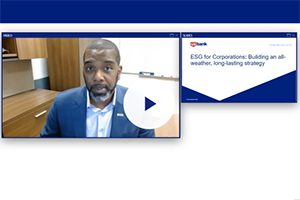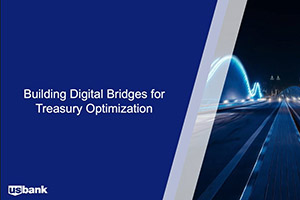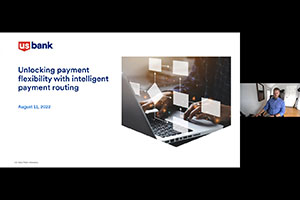Although the many pitfalls of issuing paychecks on paper, including high cost and exposure, are well-documented, restauranteurs and hospitality managers often point to reliability and ubiquity as reasons to bear the additional risk. Until prepaid and digital payments became available, their employees had no choice but to agree. What’s changed in money movement in just those few years is not merely the acceleration of digital accessibility, mobile wallets, and P2P payments; rather, the rise of digital natives into the workforce, with the expectation of information (and money) delivered now, was inevitable. For Gen Z, “it’s always been that way.”
Of course, that’s problematic for an industry accustomed to “corporate” payroll schedules for hourly and part-time employees. Not surprisingly, the fluctuations in employment and service regulations during the pandemic became a test environment for payroll innovations. Against tough odds in the labor market, digital payroll solutions gracefully satisfied the strong demand from gig- and hourly-wage employees to get paid digital. With touchless safety, early adopters of digital payroll solutions acknowledged the need for innovation, turned tradition on its heels, and quickly grabbed the lion’s share of labor. If players in the hospitality industry hope to remain and compete in the game, there is no turning back to paper paychecks.
What are the benefits of digital payroll alternatives?
In a word, the benefits of digital payroll alternatives to paper paychecks are “mutual.”
There are several options to use digital solutions to enhance the employee experience and, at the same time, improve your business operations. That means managers can attract employees with the flexibility of digital payments, meeting workers on their terms and schedules. No matter what solution is the best fit for your business and stakeholders, all digital payroll options will reduce the costs associated with printing and delivering paper checks, reconciliation or replacement, and escheatment of unprocessed checks. Upon this foundation of efficiency, there may be aspects of one solution favored over others, depending on what’s best for a business and staff.
Prepaid cards
- Convenience: Wages are automatically loaded to employee’s card with no bank account necessary, eliminating the time and costs associated with depositing or cashing paper checks.
- Ubiquity: Branded debit cards are accepted by retailers and may earn cash back at participating merchants.
- Value-added: Depending on the financial institution servicing a prepaid card payroll solution, cardholders, -- including unbanked employees -- often gain access to further digital banking and financial services through mobile apps.
Digital paychecks via faster payments
- Speed: Digital payments dramatically reduce delivery times. In some cases, the difference may be from weeks to seconds.
- Flexibility: They put tips into servers’ hands as soon as their shift is finished so employees may be paid on holidays and weekends.
On-Demand Earned Wage Access
- Customizable: Wages are issued via faster payments to an account or loaded to prepaid cards, and made available to employees to withdraw. Depending on the provider, access fees may be incurred.
- #trending: Earned wage access is rapidly becoming business as usual across several industries. Strategies vary, but are commonly known as earned income, earned wage access , Salary Advance Schemes (UK), or on-demand pay, e.g., Uber’s Instant Pay.
- Attractive: By meeting workforce expectations for modern payments and giving workers access to wages before payday, employers enhance their image and appeal to job seekers.
Digital payroll reduces exposure while saving employees time and money
There are many reasons why hourly employees prefer digital payments over paper paychecks. The time a paper check spends in the mail, or in the car on the way to the bank or sitting unclaimed at the workplace isn’t merely unattractive to hourly workers; even worse, the time taken for that worker to process their paper check (and the costs entailed) can easily value more than the check itself. This common occurrence illuminates a critical vulnerability in hiring and retention: why show up to work if it’s not worth the time to get paid for it?
The issue can be especially unattractive and a potential deterrent for “unbanked” employees who, whether due to location, personal preferences, or other circumstances, do not maintain traditional Direct Deposit Accounts (DDAs) with financial institutions.
Further drawbacks of paper-based payroll go beyond the cost of time to span the full spectrum of money movement risk factors. For both workers and management, paper checks carry the risk of loss, (or worse) theft, (which leads to) fraud, wasted energy toward timely reissues and, perhaps the biggest downfall yet: a bad employee experience with direct effects on employer reputation. Even when there comes a payroll solution better than digital payment, paper paychecks will likely remain the highest-risk, lowest-return option forever.
Digital payments optimize payroll operations
To further compound the issue of cash and paper-based compensation delivery in gig- and hourly-wage industries, business leaders tasked with cost savings and efficiency gains have moved on from incremental gains in favor of targeting the high operating expenses associated with paper-based, bi-weekly, or even monthly paychecks.
“It costs a lot of money to issue and deliver a paper check,” Osmond said. “Depending on who you ask, between two and five dollars or more, but it’s expensive, and companies are … they’re fed up. So, we explore what makes them unique and work together to save money and time. You can just imagine the weight lifted from a CFO’s shoulders.”
According to Osmond, some of the biggest savings in these industries are sourced by the digital payments and compensation strategies, including issuing payroll on prepaid cards, and utilizing faster payments rails to compensate employees for hours worked at the end of each shift.
“It’s the standard eighty-twenty principle,” Osmond said, “with a lot of our clients we see right away they’re spending 80 percent of their efforts – whether that’s time or money, but it’s usually both – on only 20 percent of their treasury and payroll operations,” he said.
“We target those activities for simplification, collaborate, innovate together, and ‘flip the script’ ... and the result we aim for, and often attain, is they’re now spending 20 percent of their cost on 80 percent of the business. And with payroll, it’s enhancing the employee experience, and that’s impacting – and I mean elevating – their customer service ratings.”
To solve for labor competition and stabilize their workforce, “we usually recommend the U.S. Bank Focus Card to our clients, and it’s not only our hospitality partners that benefit,” Osmond said. “In cases where companies are funding expenses, per diem, emergency payments, which is really a lot more industries than you’d think, the prepaid card option, combined with an earned-wage strategy, is one of the best ways to move money.”
Noting that clients have been trending toward flexibility and security, Osmond pointed toward the striking similarity between digital payroll alternatives and “legacy” banking.
“A bank-issued prepaid card can be almost as feature-rich as what you might call ‘traditional’ banking products, like checking accounts. I suppose you could think of prepaids as payment and spending tools,” Osmond said, adding “they’re incredibly secure, and, if serviced by U.S. Bank, come with access to our mobile app for workers who have never even been inside a bank […] employees might actually love digital payments more than the payroll teams do.”
Digital payroll puts people over process
Osmond stressed that the results are not simply months-end reporting facts.
“Our clients are telling us how much ‘happier’ their customers and employees are, how their retention rises, … it’s really nice to hear, but my team rates our own performance on those intangible results, and it’s changing the payments industry.”
To learn more about digital payroll solutions and faster payments strategies at U.S. Bank, and how digital business innovation can boost your business and enhance the employee and customer experience, please contact a U.S. Bank relationship manager, and connect with us today.



















































